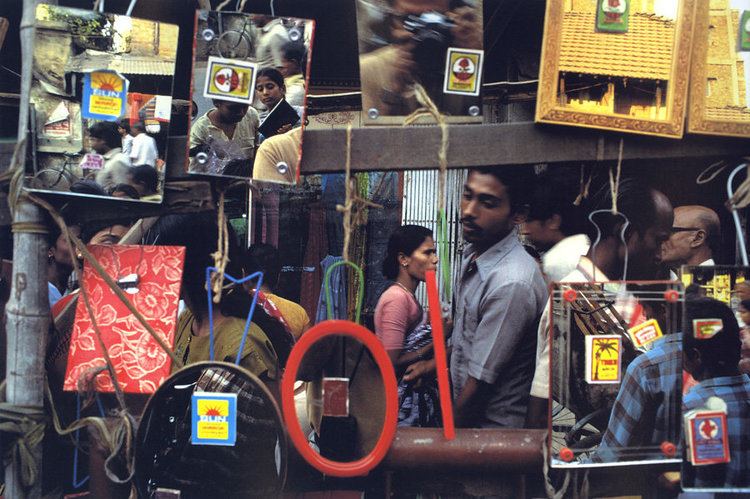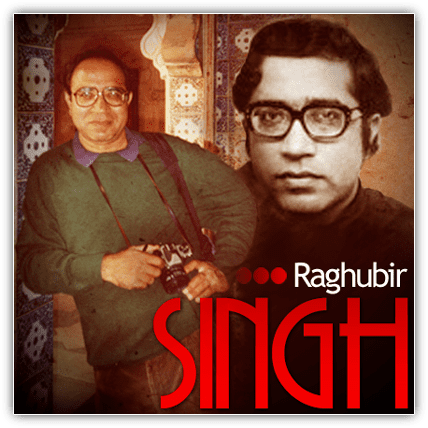Name Raghubir Singh Website Official website | Years active 1965- 1999 Role Photographer | |
 | ||
Notable work Ganga: Sacred River of India (1974)River of Colour: The India of Raghubir Singh (1998) | ||
Raghubir singh a way into india
Raghubir Singh (1942–1999) was an Indian photographer, most known for his landscapes and documentary-style photographs of the people of India. He was a self-taught photographer who worked in India and lived in Paris, London and New York. During his career he worked with National Geographic Magazine, The New York Times, The New Yorker and Time. In the early 1970s, he was one of the first photographers to reinvent the use of color at a time when color photography was still a marginal art form.
Contents
- Raghubir singh a way into india
- Early life and education
- Photographer
- Teacher
- Awards and recognition
- Personal life
- Exhibitions and retrospectives
- Group shows
- Public collections
- References
Singh belongs to a tradition of small-format street photography, pioneered by photographers like Henri Cartier-Bresson, whom he met in 1966 and observed for a week while the latter was working in Jaipur, and who, with Robert Frank, was to have a lasting impact of his work; however, unlike them, he chose to work in color, as for him this represented the intrinsic value of Indian aesthetics. In time Singh was acknowledged with William Eggleston, Stephen Shore and Joel Sternfeld as one of the finest photographers of his generation and a leading pioneer of colour photography. He travelled across India with the American photographer Lee Friedlander who according to him ‘was often looking for the abject as subject’; in the end Singh found Friedlander’s approach of ‘beauty as seen in abjection’ fundamentally western, which suited neither him nor India; thus, he built his own style and aesthetic imprint, which according to his 2004 retrospective created "a documentary-style vision was neither sugarcoated, nor abject, nor controllingly omniscient". Deeply influenced as he was by modernism, he liberally took inspiration from Rajasthani miniatures as well as Mughal paintings, and Bengal, a place where he felt the fusion of western modernist ideas and vernacular Indian art took place for the first time, evident in practitioners of the Bengal school, and also the humanism of the filmmaker Satyajit Ray, who later became a close friend. "Beauty, nature, humanism and spirituality were the cornerstones of Indian culture" for him and became the bedrock for his work.

Singh published 14 well-received books on the Ganges, Calcutta, Benares, his native Rajasthan, Grand Trunk Road, and the Hindustan Ambassador car. Today his work is part of the permanent collections of the Art Institute of Chicago, the Metropolitan Museum of Art and the Museum of Modern Art in New York and the Tokyo Metropolitan Museum of Photography, amongst others.

Early life and education

Raghubir Singh was born in 1942 in Jaipur, into an aristocratic Rajput family. His grandfather was commander-in-chief of the Jaipur Armed Forces, his father a Thakur or feudal landowner of Khetri (now in Jhunjhunu district, Rajasthan). After independence his family saw a dwindling of their fortunes. As a schoolboy, he discovered Beautiful Jaipur, Cartier-Bresson's little-known book published in 1948, which inspired his interest in photography.
After his schooling at St. Xavier's School, Jaipur, he joined the Hindu College (Delhi) but dropped out in his first year. It was here that he took seriously to photography.
Photographer
Singh first shifted base to Calcutta to make a career in the tea industry, as had his elder brother before him. This turned out to be unsuccessful, but by this time, he had started to take photographs. In Calcutta, Raghubir Singh met the historian R. P. Gupta, who later wrote for his first book Ganges (1974). Singh was gradually introduced to a circle of city artists who deeply influenced his later work, especially the realism of filmmaker Satyajit Ray, who later designed the cover of his first book and wrote the introduction of his Rajasthan book. This also set a precedent for literary input in his future books, as in the coming years the writer V. S. Naipaul conducted a dialogue with him for the preface to his book on Bombay (1994), while R. K. Narayan wrote the introduction to Tamil Nadu (1997).
By the mid-1960s, Life Magazine published eight pages of his photographs about student unrest. He later moved to Hong Kong and started doing photo features for National Geographic Magazine, The New York Times...
After a decade of travelling along the Ganges, Singh published his first book, Ganges in 1974, with an introduction by Eric Newby. Though his early work was inspired by Henri Cartier-Bresson's documentary-style photographs of India, he chose colour as his medium, responding to the vivid colours of India, and over time adapted western techniques to Indian aesthetics. His uniquely inside view of India made his images stand out amongst those by other world photographers who had shot in India.
In the 1970s, Raghubir Singh moved to Paris and during three decades of rigorous training and exposure he carved a series of portfolios of colour photography on India. His style was deeply influenced by Mughal painting and Rajasthani miniature paintings, where too within the overall framework, individual sections display autonomy.
In his early work Singh focused on the geographic and social anatomy of cities and regions of India. His work on Bombay in the early 1990s marks a turning point in his stylistic development; at the contact of the metropolis his visual language acquires a new complexity.
Teacher
In addition to his photographic work, Singh taught in New York at the School of Visual Arts, Columbia University and Cooper Union.
Awards and recognition
He was awarded the Padma Shri, by Government of India in 1983. He was also awarded the Maharaja Sawai Ram Singh Award (posthumously) on 27 October 2001. Apart from First Fellowship in Photography of the National Museum of Photography, Bradford (1986-7) and Mother Jones Lifetime Achievement Award (1999).
Personal life
In 1972, he married Anne de Henning, also a photographer, and the couple had a daughter, Devika Singh.
Raghubir Singh died on 18 April 1999 of a heart attack. Upon his death, the art critic Max Kozloff wrote, "If you can imagine what a Rajput miniaturist could have learned from Henri Cartier-Bresson, you'll have a glimmer of Raghubir Singh's aesthetic."
Exhibitions and retrospectives
In 1998 the Art Institute of Chicago organized a retrospective exhibition of his work which was still on show at the time of his death. The book River of Colour was published on the occasion of this exhibition.
In February 1999, what had been intended as a retrospective of his work at mid-career opened at the National Gallery of Modern Art, New Delhi, after showing at the Bon Marché in Paris and the Art Institute of Chicago.
